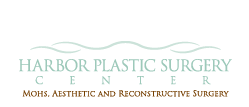Skin Cancer Treatment
There are many different treatments available for skin cancer. Each treatment has pluses and minuses in terms of invasiveness, recovery time and cure rates.
Aldara
Aldara is a topical cream that is FDA-approved for specific types of BCC cancers in non-cosmetically sensitive areas. Best for small, shallow basal cell cancers on the trunk, arms or legs
Benefits
- Non-surgical
Challenges
- Only approved for a few cancers and locations
- Lowest cure rate, with an 83% clearance
- Treatment course is 6 weeks, as skin slowly sloughs off
- Unclear if cancer is fully treated
E, D & C (Burning and scraping)
This treatment involves burning, then scraping the wound base. Best for small cancers in non-facial, non-cosmetically sensitive locations
Benefits
- Quick, without stitches
Challenges
- Scarring
- Unclear if cancer is fully treated
Liquid Nitrogen
Best for small cancers in non-facial, non-cosmetically sensitive locations
Benefits
- Non-surgical
- Quick
Challenges
- Scarring
- Unclear if cancer is fully treated
Radiation
Multiple daily treatments for 4-6 weeks as the cancer is exposed to radiation. Best for patients who are not surgical candidates.
Benefits
- Non-surgical
Challenges
- Unclear if cancer is fully treated
- Tissue is permanently affected by radiation
Simple excision with wide margins
Cutting out the cancer with a wide enough margin that, statistically, all the cancer is gone. Best for small, well-defined cancers in less cosmetically sensitive areas where there is tissue excess.
Benefits
- Can be done by a dermatologist or a plastic surgeon
- Some margin information achieved
Challenges
- Only 4% of margins evaluated
- Leaves a large defect
Mohs micrographic surgery
Thin layers of tissue are systematically excised and examined under a microscope for malignant cells. When all areas of tissue are tumor-free, surgery is complete. Best for good surgical candidates with BCC or SCC of the face.
Benefits
- Highest cure rate
- Best tissue preservation
Challenges
- Not every patient is a good surgical candidate
- Mohs doctors are often not board-certified surgeons and therefore for some defects, patients need a referral to a plastic surgeon for reconstruction following Mohs surgery
Plastic Micrographic Surgery
Dr. Piasecki pioneered Plastic Micrographic Surgery. It is Mohs excision, followed by functional and cosmetic reconstruction performed by one doctor fellowship-trained in Mohs surgery and board-certified in plastic and reconstructive surgery and facial plastic surgery. Best for surgical candidates with BCC or SCC in cosmetically sensitive areas (facial).
Benefits
- Cure rate same as Mohs
- Pre-operative visit is performed by plastic surgeon prior to removing any tissue
- Excision and reconstruction are done in the same visit
- Most convenient treatment
- Most cost effective treatment
- Gold standard cosmetic results
- Can be combined with cosmetic surgery
Challenges
- Not every patient is a good surgical candidate
- Some reconstructions can have lengthy recovery processes
Click here for more information on Plastic Micrographic Surgery.





